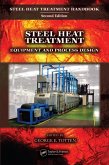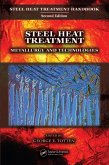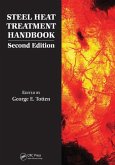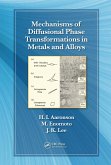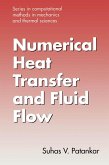Quenching Theory and Technology (eBook, PDF)
Redaktion: Liscic, Bozidar; Totten, George E.; Canale, Lauralice C. F.; Tensi, Hans M.
243,95 €
243,95 €
inkl. MwSt.
Sofort per Download lieferbar

122 °P sammeln
243,95 €
Als Download kaufen

243,95 €
inkl. MwSt.
Sofort per Download lieferbar

122 °P sammeln
Jetzt verschenken
Alle Infos zum eBook verschenken
243,95 €
inkl. MwSt.
Sofort per Download lieferbar
Alle Infos zum eBook verschenken

122 °P sammeln
Quenching Theory and Technology (eBook, PDF)
Redaktion: Liscic, Bozidar; Totten, George E.; Canale, Lauralice C. F.; Tensi, Hans M.
- Format: PDF
- Merkliste
- Auf die Merkliste
- Bewerten Bewerten
- Teilen
- Produkt teilen
- Produkterinnerung
- Produkterinnerung

Bitte loggen Sie sich zunächst in Ihr Kundenkonto ein oder registrieren Sie sich bei
bücher.de, um das eBook-Abo tolino select nutzen zu können.
Hier können Sie sich einloggen
Hier können Sie sich einloggen
Sie sind bereits eingeloggt. Klicken Sie auf 2. tolino select Abo, um fortzufahren.

Bitte loggen Sie sich zunächst in Ihr Kundenkonto ein oder registrieren Sie sich bei bücher.de, um das eBook-Abo tolino select nutzen zu können.
Quenching is one of the most fundamentally complex processes in the heat treatment of metals, and it is something on which mechanical properties and distortion of engineering components depend. With chapters written by the most respected international experts in the field, Quenching Theory and Technology, Second Edition presents the most authoritat
- Geräte: PC
- mit Kopierschutz
- eBook Hilfe
- Größe: 19.71MB
Andere Kunden interessierten sich auch für
![Steel Heat Treatment (eBook, PDF) Steel Heat Treatment (eBook, PDF)]() Steel Heat Treatment (eBook, PDF)64,95 €
Steel Heat Treatment (eBook, PDF)64,95 €![Heat Conduction Using Greens Functions (eBook, PDF) Heat Conduction Using Greens Functions (eBook, PDF)]() Kevin ColeHeat Conduction Using Greens Functions (eBook, PDF)171,95 €
Kevin ColeHeat Conduction Using Greens Functions (eBook, PDF)171,95 €![Steel Heat Treatment (eBook, PDF) Steel Heat Treatment (eBook, PDF)]() Steel Heat Treatment (eBook, PDF)243,95 €
Steel Heat Treatment (eBook, PDF)243,95 €![Steel Heat Treatment Handbook - 2 Volume Set (eBook, PDF) Steel Heat Treatment Handbook - 2 Volume Set (eBook, PDF)]() Steel Heat Treatment Handbook - 2 Volume Set (eBook, PDF)317,95 €
Steel Heat Treatment Handbook - 2 Volume Set (eBook, PDF)317,95 €![Mechanisms of Diffusional Phase Transformations in Metals and Alloys (eBook, PDF) Mechanisms of Diffusional Phase Transformations in Metals and Alloys (eBook, PDF)]() Hubert I. AaronsonMechanisms of Diffusional Phase Transformations in Metals and Alloys (eBook, PDF)136,95 €
Hubert I. AaronsonMechanisms of Diffusional Phase Transformations in Metals and Alloys (eBook, PDF)136,95 €![Flexible Multibody System Dynamics: Theory And Applications (eBook, PDF) Flexible Multibody System Dynamics: Theory And Applications (eBook, PDF)]() Mingjun XieFlexible Multibody System Dynamics: Theory And Applications (eBook, PDF)142,95 €
Mingjun XieFlexible Multibody System Dynamics: Theory And Applications (eBook, PDF)142,95 €![Numerical Heat Transfer and Fluid Flow (eBook, PDF) Numerical Heat Transfer and Fluid Flow (eBook, PDF)]() Suhas PatankarNumerical Heat Transfer and Fluid Flow (eBook, PDF)243,95 €
Suhas PatankarNumerical Heat Transfer and Fluid Flow (eBook, PDF)243,95 €-
-
-
Quenching is one of the most fundamentally complex processes in the heat treatment of metals, and it is something on which mechanical properties and distortion of engineering components depend. With chapters written by the most respected international experts in the field, Quenching Theory and Technology, Second Edition presents the most authoritat
Dieser Download kann aus rechtlichen Gründen nur mit Rechnungsadresse in A, B, BG, CY, CZ, D, DK, EW, E, FIN, F, GR, HR, H, IRL, I, LT, L, LR, M, NL, PL, P, R, S, SLO, SK ausgeliefert werden.
Produktdetails
- Produktdetails
- Verlag: Taylor & Francis eBooks
- Seitenzahl: 725
- Erscheinungstermin: 19. Juli 2010
- Englisch
- ISBN-13: 9781420009163
- Artikelnr.: 42765605
- Verlag: Taylor & Francis eBooks
- Seitenzahl: 725
- Erscheinungstermin: 19. Juli 2010
- Englisch
- ISBN-13: 9781420009163
- Artikelnr.: 42765605
- Herstellerkennzeichnung Die Herstellerinformationen sind derzeit nicht verfügbar.
Bozidar Lisčic received his BS in Mech. Engineering (1954) from the University of Zagreb (Croatia), and his Ph.D.in Material Science (1975) from the same university. He is a full professor (retired) of the Faculty for Mechanical Engineering and Naval Architecture the University of Zagreb. From 1971-1990 he served as UNDP Expert for Heat Treatment in: Israel, India, Egypt, Turkey, Bangladesh and Pakistan. Prof. Lisčic is past-president of the International Federation for Heat Treatment and Surface Engineering (IFHTSE), and a Fellow of ASM International. From 2003 to 2008 he was member of the Standing Committee for Physical and Engineering Sciences of the European Science Foundation (ESF). He is a Founding member of the ASM-Heat Treating Society, and a Full member of the Croatian Academy of Sciences and Arts. Prof. Lisčic is author or coauthor of over 100 publications, and contributed to the following books: Technologie der Wärmebehandlung von Stahl, Theory and Technology of Quenching (editor), Steel Heat Treatment Handbook, and Steel Heat Treatment Handbook-Second Edition- Metallurgy and Technologies. George E. Totten, Ph.D. is President of G.E. Totten & Associates, LLC in Seattle, Washington and a visiting professor of Mechanical and Materials Engineering at Portland State University, Portland, OR, USA. Dr. Totten is co-editor of a number of books including Steel Heat Treatment Handbook, Handbook of Aluminum, Handbook of Hydraulic Fluid Technology, Mechanical Tribology, and Surface Modification and Mechanisms (all titles of CRC Press), as well as the author or coauthor of over 500 technical papers, patents and books on lubrication, hydraulics and thermal processing. Dr. Totten is a Fellow of ASM International, SAE International, the International Federation for Heat Treatment and Surface Engineering (IFHTSE) and the American Society for Testing and Materials International (ASTM). He is also a member of other professional organizations including: ACS, ASME, STLE, and ASTM. Dr. Totten formerly served as president of IFHTSE. He received the BS and MS degrees from Fairleigh Dickinson University. Teaneck, New Jersey and the Ph.D. degree from New York University, New York. Lauralice C. F. Canale is an associate professor at the University of São Paulo (Brazil) where she is responsible for Heat Treatment, Tribology and Science and Materials Engineering courses. Prof. Canale received her MS degree and PhD degrees in mechanical engineering from the same university and conducted Post Doctoral research at the University of Tennessee (USA). Prof. Canale is a co-editor of 3 books: Failure Analysis of Heat Treated Steel Components (ASM), Theory and Technology of Quenching. 2nd edition (CRC) and a commemorative book "15 Anos do Programa de Post-Graduação em Ciência e Engenharia de Materiais" (EESC/USP). She is an author or co-author of 9 chapters (ASM and CRC books) and over 140 technical papers. She has received various awards and citations and recently received the Fellow of IFHTSE award.
Hardening of Steels. Quenching of Aluminum Alloys. Quenching of Titanium
Alloys. Mechanical Properties of Ferrous and Nonferrous Alloys after
Quenching. Thermo- and Fluid-Dynamic Principles of Heat Transfer during
Cooling. Heat Transfer during Cooling of Heated Metals with Vaporizable
Liquids. Wetting Kinematics. Wetting Kinetics and Quench Severity of
Selected Vegetable Oils for Heat Treatment. Residual Stresses after
Quenching. Effect of Workpiece Surface Properties on Cooling Behavior.
Determination of Quenching Power of Various Fluids. Types of Cooling Media
and Their Properties. Gas Quenching. Techniques of Quenching. Intensive
Steel Quenching Methods. Prediction of Hardness Profi le in Workpiece Based
on Characteristic Cooling Parameters and Material Behavior during Cooling.
Simulation of Quenching. Appendices. Index.
Alloys. Mechanical Properties of Ferrous and Nonferrous Alloys after
Quenching. Thermo- and Fluid-Dynamic Principles of Heat Transfer during
Cooling. Heat Transfer during Cooling of Heated Metals with Vaporizable
Liquids. Wetting Kinematics. Wetting Kinetics and Quench Severity of
Selected Vegetable Oils for Heat Treatment. Residual Stresses after
Quenching. Effect of Workpiece Surface Properties on Cooling Behavior.
Determination of Quenching Power of Various Fluids. Types of Cooling Media
and Their Properties. Gas Quenching. Techniques of Quenching. Intensive
Steel Quenching Methods. Prediction of Hardness Profi le in Workpiece Based
on Characteristic Cooling Parameters and Material Behavior during Cooling.
Simulation of Quenching. Appendices. Index.
Hardening of Steels. Quenching of Aluminum Alloys. Quenching of Titanium
Alloys. Mechanical Properties of Ferrous and Nonferrous Alloys after
Quenching. Thermo- and Fluid-Dynamic Principles of Heat Transfer during
Cooling. Heat Transfer during Cooling of Heated Metals with Vaporizable
Liquids. Wetting Kinematics. Wetting Kinetics and Quench Severity of
Selected Vegetable Oils for Heat Treatment. Residual Stresses after
Quenching. Effect of Workpiece Surface Properties on Cooling Behavior.
Determination of Quenching Power of Various Fluids. Types of Cooling Media
and Their Properties. Gas Quenching. Techniques of Quenching. Intensive
Steel Quenching Methods. Prediction of Hardness Profi le in Workpiece Based
on Characteristic Cooling Parameters and Material Behavior during Cooling.
Simulation of Quenching. Appendices. Index.
Alloys. Mechanical Properties of Ferrous and Nonferrous Alloys after
Quenching. Thermo- and Fluid-Dynamic Principles of Heat Transfer during
Cooling. Heat Transfer during Cooling of Heated Metals with Vaporizable
Liquids. Wetting Kinematics. Wetting Kinetics and Quench Severity of
Selected Vegetable Oils for Heat Treatment. Residual Stresses after
Quenching. Effect of Workpiece Surface Properties on Cooling Behavior.
Determination of Quenching Power of Various Fluids. Types of Cooling Media
and Their Properties. Gas Quenching. Techniques of Quenching. Intensive
Steel Quenching Methods. Prediction of Hardness Profi le in Workpiece Based
on Characteristic Cooling Parameters and Material Behavior during Cooling.
Simulation of Quenching. Appendices. Index.

